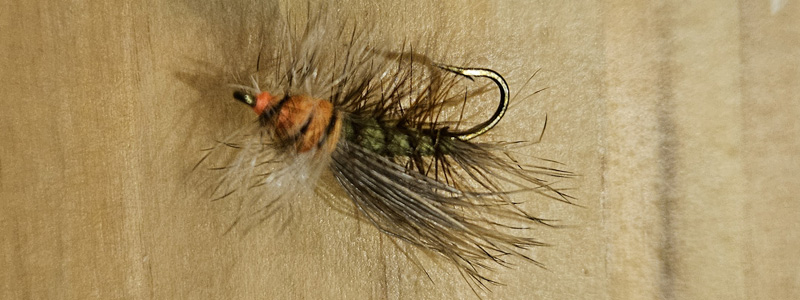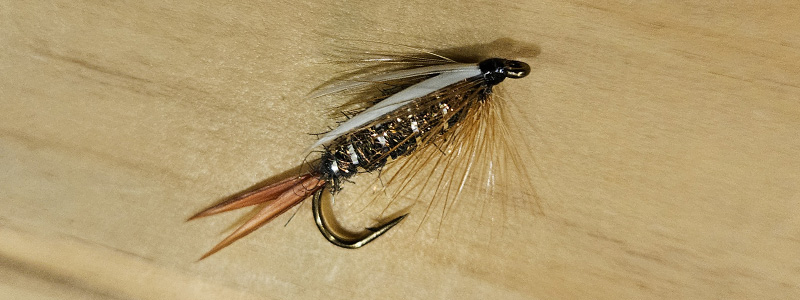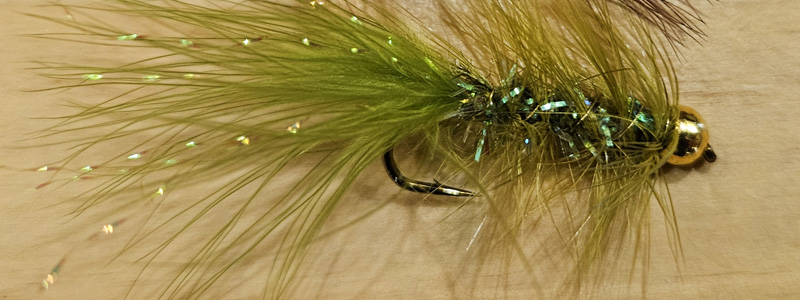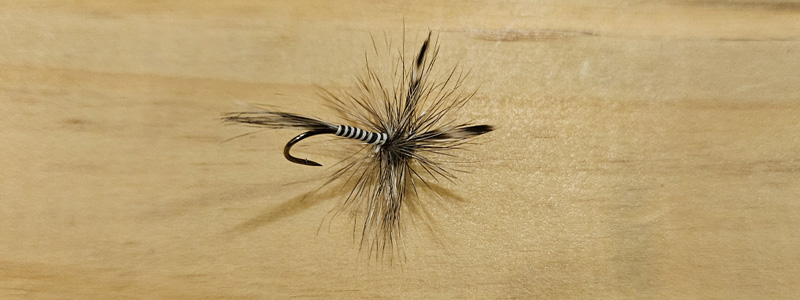When it comes to fly fishing for trout, choosing the right flies can make all the difference. In this comprehensive guide, we’ll explore the top fly fishing flies for trout, helping you understand which patterns to use and when. Whether you’re a beginner or an experienced angler, this article will provide valuable insights to enhance your trout fishing success.
What Are the Essential Types of Flies for Trout Fishing?
When it comes to fly fishing for trout, having the right selection of flies can make all the difference between a successful day on the water and coming home empty-handed. Let’s dive into the essential types of flies you should have in your fly box.
First up, we’ve got dry flies. These little beauties are designed to float on the water’s surface, imitating adult insects that have just emerged or are laying eggs. They’re a favorite among many anglers because there’s nothing quite like watching a trout rise to take your fly off the surface.
Next, we have nymphs. These flies imitate the underwater larval stage of aquatic insects. Trout spend much of their time feeding on these subsurface morsels, so having a good selection of nymphs is crucial.
Streamers are another important type of fly. These larger flies mimic small fish or other aquatic creatures such as leeches, and are great for targeting bigger, more aggressive trout.
Next, we have the emergers! These flies represent insects in the process of hatching, transitioning from their underwater nymph stage to their adult form. They’re often irresistible to feeding trout.
Last but not least, we have terrestrials. These flies imitate land-based insects that might find themselves in the water, like ants, beetles, or grasshoppers, mice (yes, mice! these can be quite good for big trout, northern pike, etc.). They can be especially effective during the warmer months.
How Do Dry Flies Work for Trout Fishing?
These flies are designed to imitate adult insects that have just emerged from the water or are returning to lay eggs. The key to their effectiveness lies in their ability to float on the water’s surface, presenting a tempting target for hungry trout.
Dry flies work best during insect hatches when trout are actively feeding on the surface. It’s a sight to behold when you see a trout rise and sip your fly off the surface – it’s what makes fly fishing so addictive!
Some popular dry fly patterns include the Adams, Elk Hair Caddis, and Parachute Adams. These flies have stood the test of time and continue to fool trout year after year. The Adams, for example, is a great all-around pattern that can imitate a variety of mayflies. The Elk Hair Caddis, with its buoyant elk hair wing, is excellent for imitating adult caddisflies skittering across the water’s surface.
When fishing dry flies, presentation is key. You want to achieve a natural drift, allowing the fly to float along with the current just as a real insect would. This often means mending your line to prevent drag and ensure your fly looks as natural as possible to the trout below.
Why Are Nymphs Crucial for Fly Fishing Flies for Trout?
Nymphs are the unsung heroes of fly fishing for trout. While dry flies might get all the glory, nymphs often do the heavy lifting when it comes to consistently catching fish. These flies mimic the underwater larval stage of aquatic insects, which make up a significant portion of a trout’s diet.
What makes nymphs so crucial is their versatility. Trout feed on nymphs year-round, making them an effective choice regardless of the season. Even when there’s no visible surface activity, you can bet that trout are still feeding on nymphs beneath the surface.
Some key nymph patterns every angler should have in their box include the Pheasant Tail, Hare’s Ear, and Copper John. The Pheasant Tail is an excellent imitation of many mayfly nymphs, while the Hare’s Ear is a great generalist pattern that can represent a variety of aquatic insects. The Copper John, with its flashy copper wire body, is a attractor pattern that can trigger strikes even in challenging conditions.
When fishing nymphs, depth control is crucial. You want your fly to be in the feeding zone where the trout are holding. This often means adding weight to your rig or using a strike indicator to help detect those subtle takes.
When Should You Use Streamers for Trout?
Streamers are the big guns of the fly fishing world. These larger flies imitate baitfish and other substantial prey items, making them perfect for targeting aggressive trout and larger fish. But when exactly should you reach for a streamer?
Streamers are particularly effective when trout are in a predatory mood. This could be during pre-spawn periods when trout are bulking up, or during high water conditions when smaller food items are harder to target. They’re also a great choice when you’re looking to cover a lot of water quickly or when you’re targeting structure where bigger trout might be holding.
Some classic streamer patterns include the Woolly Bugger, Muddler Minnow, and Zonker. The Woolly Bugger is a versatile pattern that can imitate everything from leeches to small fish. The Muddler Minnow, with its spun deer hair head, is excellent for imitating sculpins and other bottom-dwelling baitfish. The Zonker, with its enticing rabbit strip, provides lifelike movement in the water that trout find hard to resist.
Fishing streamers often involves a more active approach than fishing nymphs or dry flies. You might strip the fly to imitate a fleeing baitfish, or swing it across current to trigger a reaction strike. Don’t be afraid to experiment with different retrieves to find what the trout prefer on any given day.
What Role Do Emergers Play in Trout Fly Fishing?
Emergers are the in-betweeners of the fly fishing world, representing insects in the process of transitioning from their underwater nymph stage to their adult form. This vulnerable stage of an insect’s life cycle is often when they’re most susceptible to predation by trout, making emerger patterns highly effective.
Emergers are particularly deadly during hatches. While some trout may be focused on fully-emerged adults on the surface, many will be keyed in on the easier-to-catch emergers just below the film. This is why you might sometimes see trout seemingly rise to the surface without actually breaking it – they’re likely feeding on emergers.
Popular emerger patterns include the RS2, Klinkhammer, and CDC Emerger. The RS2 is a simple yet effective pattern that can imitate a variety of emerging mayflies. The Klinkhammer, with its parachute-style hackle and trailing shuck, sits perfectly in the surface film. CDC (Cul de Canard) Emergers utilize the natural buoyancy of duck feathers to create highly realistic imitations.
When fishing emergers, try to position your fly right in or just below the surface film. This often means fishing with a “slack line” technique to allow your fly to sit naturally in the water without being affected by drag from your line.
How Can Terrestrial Flies Improve Your Trout Fishing Success?
These patterns imitate insects that live on land but occasionally find themselves in the water, much to the delight of opportunistic trout. Incorporating terrestrials into your fly selection can significantly improve your success, especially during certain times of the year.
Terrestrial flies really come into their own during the summer and fall months. As temperatures rise and insect activity on land increases, more and more of these critters end up in the water. Trout quickly learn to look for these high-protein snacks, making terrestrial patterns highly effective.
Key terrestrial patterns include Foam Ants, Grasshoppers, and Beetles. Foam Ants are great imitations of the tiny ants that often fall into streams. Grasshopper patterns, like the famous Dave’s Hopper, can trigger explosive strikes from large trout. Beetle patterns, such as the Japanese Beetle, are excellent for imitating the various beetles that might end up in the water.
When fishing terrestrials, pay special attention to the banks and overhanging vegetation. Trout often patrol these areas looking for insects that might fall in. A well-placed terrestrial fly near the bank can often elicit a strike from a wary trout that might ignore other offerings.
What Are the Top 10 Fly Fishing Flies for Trout?
If you’re looking to stock your fly box with some tried-and-true patterns, here’s a list of the top 10 fly fishing flies for trout that have consistently proven their worth:
- Parachute Adams: This versatile dry fly can imitate a variety of mayflies and is effective on streams and rivers across the globe.
- Pheasant Tail Nymph: A classic nymph pattern that imitates a wide range of aquatic insects in their larval stage.
- Woolly Bugger: This streamer pattern is incredibly versatile, imitating everything from leeches to small fish.
- Elk Hair Caddis: An excellent dry fly for imitating adult caddisflies, which are a staple food source for trout in many waters.
- Prince Nymph: With its distinctive white wing pads, the Prince Nymph is an attractor pattern that can represent a variety of nymphs.
- Royal Wulff: This high-floating dry fly is great for fast water and can also serve as an attractor pattern.
- Hare’s Ear Nymph: Another classic nymph pattern that imitates a variety of aquatic insects and is effective year-round.
- Stimulator: This bushy dry fly can imitate stoneflies and terrestrials, making it a great searching pattern.
- Zebra Midge: A simple yet effective pattern for imitating the tiny midges that trout often feed on, especially in tailwaters.
- Griffith’s Gnat: This tiny dry fly is excellent for imitating midge clusters and can be deadly during midge hatches.
Having these flies in your box will prepare you for a wide range of fishing situations and increase your chances of success on the water.
How Do Seasonal Changes Affect Fly Selection for Trout?
Choosing the right fly fishing flies for trout isn’t just about having a diverse selection; it’s also about understanding how seasonal changes affect trout behavior and insect activity. Let’s break it down by season:
In spring, as water temperatures begin to rise, insect activity increases. This is a great time to focus on nymphs and emergers. Many aquatic insects start their life cycles in spring, so patterns like the Pheasant Tail Nymph and RS2 can be particularly effective. As hatches become more frequent, be prepared with dry flies that match the local insects.
Summer is prime time for dry fly fishing. Warmer temperatures mean more surface activity, with numerous insect hatches occurring. This is when your Adams, Elk Hair Caddis, and other dry flies will really shine. It’s also the season when terrestrial patterns become highly effective, so don’t forget your ants, beetles, and grasshoppers.
As we move into fall, trout often become more aggressive as they prepare for the leaner winter months. This is a great time to fish larger nymphs and streamers. Patterns like the Woolly Bugger can be particularly effective for targeting pre-spawn trout. However, don’t put away your dry flies just yet – fall can also bring some excellent Blue Winged Olive hatches.
Winter is typically the most challenging season for fly fishing, but it can also be rewarding (provided you don’t live in a place where everything freezes over!). Trout metabolism slows down in cold water, so they’re less likely to move far for food. Focus on small midges and nymphs, fished deep and slow. Patterns like the Zebra Midge and small Pheasant Tail Nymphs can be effective even in the coldest months.
Remember, these are general guidelines, and local conditions can vary. Always be prepared to adapt your fly selection based on what you observe on the water. Check out beginner guide on more tips and information on how to fly fish for trout.
What Factors Should You Consider When Choosing Flies for Trout?
Selecting the right fly fishing flies for trout isn’t just about matching the hatch or following a seasonal pattern. There are several factors you should consider to increase your chances of success:
Water conditions play a crucial role in fly selection. In clear water, trout can be more selective, so you might need to use more realistic patterns and finer tippets. In murky or fast-moving water, you might have better luck with larger, more visible patterns or attractor flies.
Time of day and light conditions can also affect your fly choice. During low light conditions (early morning, late evening, or overcast days), trout may be more willing to rise to the surface, making dry flies more effective. Bright sunlight might push trout deeper, where nymphs or streamers might be more successful.
Current insect activity is perhaps the most important factor. Take some time to observe what’s happening on and around the water. Are there insects hatching? What size and color are they? This information can guide you to select a fly that closely matches what the trout are already feeding on.
Trout feeding behavior can vary based on many factors, including water temperature, time of year, and available food sources. Sometimes trout may be actively feeding on the surface, while other times they might be more focused on subsurface food. Pay attention to any rising fish or other signs of feeding activity.
Lastly, consider the preferences of the trout in your specific location. Trout in heavily fished areas may become wary of common patterns, so sometimes thinking outside the box and trying something different can pay off.
How Can You Match the Hatch for Better Trout Fishing Results?
“Matching the hatch” is a fundamental concept in fly fishing for trout. It refers to using flies that closely resemble the insects that trout are currently feeding on. While it might sound simple, effectively matching the hatch can significantly improve your success rate. Here’s how you can do it:
First, take some time to observe the insects on and around the water. Look for bugs flying in the air, floating on the surface, or crawling on nearby rocks. Pay attention to their size, color, and behavior.
Using a small net or seine to sample the underwater insects can provide valuable information. Gently disturb the riverbed upstream of your net to catch any nymphs or larvae that might be present. This can give you a good idea of what’s available to the trout beneath the surface.
Once you’ve identified the prevalent insects, select flies that closely resemble them in size, color, and profile. Don’t just focus on adult insects – remember that nymphs and emergers often make up a significant portion of a trout’s diet.
It’s also important to consider the life cycle stage of the insects. During a hatch, trout might be keyed in on emerging insects one moment and then switch to feeding on adults the next. Having a selection of nymphs, emergers, and dry flies that match the hatching insect can allow you to adapt to changing conditions.
Remember, matching the hatch isn’t always about having an exact imitation. Sometimes, a general impression of size and color is enough to trigger a strike. The key is to present a fly that looks like a natural and available food source to the trout.
What Are Some Tips for Presenting Fly Fishing Flies to Trout?
Having the right fly fishing flies for trout is only half the battle – presenting them effectively is equally important. Here are some tips to help you improve your presentation and increase your chances of fooling those wary trout:
Practice proper casting techniques. Accurate and delicate presentations can make a huge difference, especially when fishing to spooky trout in clear water. Work on your casting skills to place your fly exactly where you want it with minimal disturbance to the water.
Use appropriate leader and tippet sizes. Your leader setup should be balanced with your fly size and the conditions you’re fishing in. In general, use finer tippets for smaller flies and in clearer water where trout might be more selective.
Achieving a drag-free drift is crucial, especially when fishing dry flies and nymphs. “Drag” occurs when your line pulls the fly through the water faster or slower than the natural current, making it look unnatural to the trout. Practice mending your line and using slack line casts to achieve a more natural drift.
When fishing streamers, experiment with different retrieval methods. Sometimes a slow, steady retrieve works best, while other times a erratic, stripped retrieve might trigger more strikes. Pay attention to how the trout react and adjust your technique accordingly.
Don’t neglect your approach to the water. Trout are easily spooked, so move slowly and try to avoid casting your shadow over the area you’re fishing. Sometimes, taking a stealthy approach can be just as important as fly selection.
Lastly, be patient and observant. Take the time to read the water and look for signs of feeding trout before making your first cast. A well-placed fly in the right spot is often more effective than making numerous casts hoping for a lucky strike.
Remember, fly fishing is as much an art as it is a science. While these tips can help guide you, there’s no substitute for time on the water. The more you fish, the better you’ll become at selecting the right flies and presenting them effectively to trout.
Conclusion
Mastering the use of fly fishing flies for trout is an essential skill for any angler. By understanding the various types of flies, their applications, and how to choose the right patterns for different conditions, you’ll greatly improve your chances of success on the water. Remember to observe your surroundings, match the hatch when possible, and don’t be afraid to experiment with different flies and techniques. With practice and persistence, you’ll soon be catching more trout and enjoying the art of fly fishing to its fullest.






